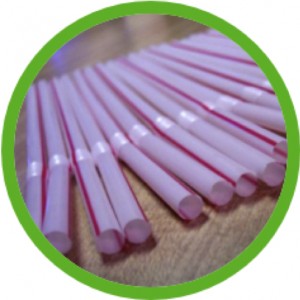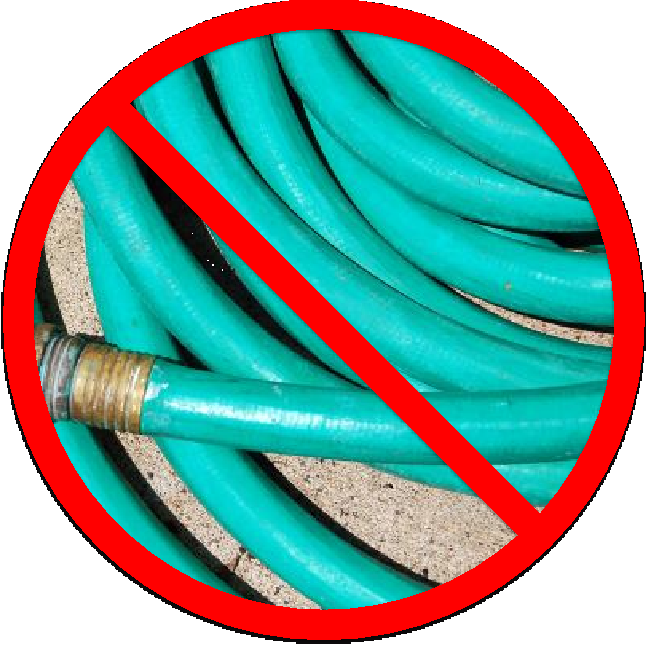Is Bigger Better?
For years cardiac surgeons have put in large chest tubes, often 36 Fr (12mm, 0.5 inches) in diameter and larger, to evacuate blood from around the heart and lungs after heart surgery. These large diameter tubes have been referred to as garden hoses, and patients are often shocked when they wake up to see these large tubes exiting their bodies. A recent publication by Rahman and colleagues (1) found that large diameter chest tubes also cause significantly more pain for patients. So why not choose something more the size of, as Dr. Baumann calls it, a soda straw (2)?
Though large tubes are more painful, the concern, appropriately, is that smaller chest tubes will become obstructed and leave blood in the chest (retained blood complex). It turns out that even large chest tubes can clog, and when they do, RBC can occur. Size is only one part of a chest drainage strategy. In addition to size, the surgeon must also consider the optimal position of the chest tubes, and the duration of use. Of critical importance in determining the optimal size is deciding how to keep the inside of the chest tubes clear of clot obstructions so as to evacuate the blood that is accumulating and coagulating. Once blood enters a chest tube, its natural reaction is to clot. As the clot grows, it reduces the effective internal diameter. The physics of viscous fluid flowing through a tube (Poiseuille’s Law) tells us that the flow rate is dependent on the internal diameter to the fourth power. This means that for a 50% reduction in a tube’s internal diameter, there is a 94% reduction in the flow rate through the tube. No wonder many doctor’s first instinct is to choose the largest possible tube (like a garden hose).
This theory was put to test in the lab by comparing a chest tube that was kept clear of obstruction using PleuraFlow Active Clearance Technology (ACT) to a conventional chest tube of equal diameter. Using identical bleeding conditions over a two hour period, the chest tube cleared with ACT evacuated nearly three times as much blood as the conventional chest tube (3). The investigators then took the test one step further. Could a “soda straw” sized tube evacuate more blood than a “garden hose” if the straw was never obstructed? In a paper published in the Annals of Thoracic Surgery from the Cleveland Clinic, they demonstrated that smaller diameter chest tubes (20 Fr – 6.7mm, 0.26 inches) provided significantly superior blood evacuation and significantly less retained blood compared to larger diameter (32 Fr – 10.7mm, 0.42 inches) when the internal diameter is kept free of obstruction using ACT (4). This was the first time a small diameter tube was shown to evacuate blood better than a large diameter tube.
three times as much blood as the conventional chest tube (3). The investigators then took the test one step further. Could a “soda straw” sized tube evacuate more blood than a “garden hose” if the straw was never obstructed? In a paper published in the Annals of Thoracic Surgery from the Cleveland Clinic, they demonstrated that smaller diameter chest tubes (20 Fr – 6.7mm, 0.26 inches) provided significantly superior blood evacuation and significantly less retained blood compared to larger diameter (32 Fr – 10.7mm, 0.42 inches) when the internal diameter is kept free of obstruction using ACT (4). This was the first time a small diameter tube was shown to evacuate blood better than a large diameter tube.
So is bigger better? Bigger is only better in the sense that it may give a chest tube more time before it becomes so obstructed that it compromises postoperative blood evacuation. But keeping the internal diameter of a chest tube free of clot appears to be a more important determinant of blood evacuation than the tube size. So with ACT, maybe size does not matter.
- Rahman N, Maskell N, Davies C; et al. The relationship between chest tube size and clinical outcomes in pleural infection, Chest 2010 1373 536-543
- Baumann, Michael H. Death to the Garden Hose? Chest 2010,137(3): 512-514
- Shiose, A.; Takaseya, T.; Fumoto, H.; Arakawa, Y.; Horai, T.; Boyle, E. M.; Gillinov, A. M.; Fukamachi, K. “Improved drainage with active chest tube clearance.” Interactive CardioVascular and Thoracic Surgery 10 (5): 685–688.
- Arakawa, Yoko; Shiose, Akira; Takaseya, Tohru; Fumoto, Hideyuki; Kim, Hyun-Il; Boyle, Edward M.; Gillinov, A. Marc; Fukamachi, Kiyotaka. “Superior Chest Drainage With an Active Tube Clearance System: Evaluation of a Downsized Chest Tube.” The Annals of Thoracic Surgery 91 (2): 580–583.
